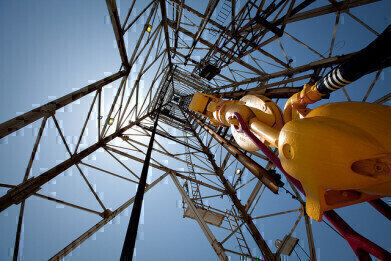Fuel for thought
How Long Will the Shale Boom Last?
Nov 01 2014
The boom in oil and gas shale extraction via hydraulic fracturing (or fracking) has been steadily bubbling away for the last few decades and took off in earnest in the early 2000s. Since then, its widespread deployment across the United States has led to that country overtaking both Russia and Saudi Arabia in the oil production stakes to become number one country in the world.
But will this boom last? Or, as some critics predict, is it a bubble that is destined to burst?
The remarkable story of fracking
By 2008, American oil production had reached the unprecedented heights of six million barrels of oil per day. Such a growth in production meant that the US no longer had to rely heavily on imports of the black stuff from oil-rich countries such as Saudi Arabia and Iran. Countries across the globe have sit up and take notice. President Obama predicted that fracking could serve as a “bridge” between fossil fuels and cleaner energy and could potentially provide the States with oil for 100 years or more.
However, not everyone has been quite so enamoured with the process. In France, the process has been banned because of the environmental concerns it carries. This lies largely in the chemicals that are injected into the Earth along with pressurised water and the dangers if such chemicals were to leak into our water supplies. Such concerns remain prominent in Britain despite the fact that the shale reserve estimates released by the British Geological Survey show tremendous potential in profitability.
These concerns may yet play a part in how long the shale boom lasts since they may affect both supply and demand. Tighter restrictions on fracking practices could lead to less oil being produced. Moreover, if the process becomes less desirable, demand for fracked shale oil and gas will also fall. In a bid to avoid either of these concerns coming to fruition, outspoken supporter of the process Chris Faulkner (otherwise known as “the Frack Master”) has given reasons why these fears are unfounded. His defence of the practice can be read in this article: Is Fracking the Way Forward? An Interview with Chris Faulkner.
Are the Reserves as Big as First Believed?
Quite aside from any environmental concerns, there is also controversy and doubt about the initial astronomical estimates of shale reserves available. One of the major sites designated for fracking is found in California, but in a report released earlier this year, the Monterey shale reserves estimate was cut by 96%. That represents a massive discrepancy in what was formerly believed to be there; from an alleged 13.7 billion barrels, the estimate has fallen to a very modest 600 million.
This is mainly due to the technology currently available to us. The positioning of the shale means that the vast majority off it is not able to be removed because it would not be financially feasible to do so. Of course, if technology advances allow for more efficient and further-reaching drilling, these latent reserves could be viable sources once again. But until these advances manifest themselves, they are nothing more than a pipe dream.
Unpredictability of the Boom
Add to this uncertainty over our technology the fluctuating global demand for oil – and the accompanying fluctuating price of oil itself – and it becomes very hard to judge just how long these reserves will last. The substantial rise in Indian and Chinese demand has compensated for the American decline (as it can provide more and more of its oil) for Saudi oil, meaning that prices have remained unaffected.
However, should this demand fall, prices will fall with it. As a result, it may become unfeasible to continue with a practice that already does not yield a huge profit margin. Taking all of these variables into account, it becomes very difficult to say exactly when the boom will wane.
Many experts are predicting (using today’s economy and technology as a guideline) that the bubble will burst within five years. Advances in technology could prolong the practice as long as 20 or perhaps even 30 years, but Obama’s estimate of a century seems to be way off. Only time will tell.
Digital Edition
PIN 25.6 Buyers' Guide
January 2025
Buyers' Guide Directory - Product Listings by Category - Suppliers Listings (A-Z) Articles Analytical Instrumentation - ASTM D7042: The Quantum Leap in Viscosity Testing Technology -...
View all digital editions
Events
Jan 20 2025 San Diego, CA, USA
Jan 22 2025 Tokyo, Japan
Jan 25 2025 San Diego, CA, USA
SPE Hydraulic Fracturing Technology Conference and Exhibition
Feb 04 2025 The Woodlands, TX, USA
Feb 05 2025 Guangzhou, China



















